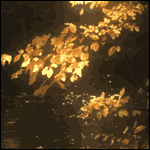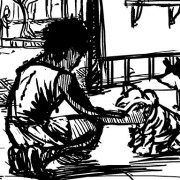|
I opened a jar of 2017 medium/high charcoal roast dong ding again last weekend. I had saved the last 20g as it was still really nice a year ago, high quality leaf. Sadly it had turned bland and simple. Tried steeping with different techniques, but it seems to just not be as interesting anymore :/ Same with a couple of my yan chas too, need to order a new batch as soon as the 2020 harvest hits the market (mai/june?). Any suggestions to where I can score some high quality dancongs? Particularly interested in picking up some guihua xiang/osmanthus fragrance dancong. I picked up quite a lot of shui xian from taobao last year. It used to be a nice daily drinker. Sadly it has turned sort of sour over the last year. Perhaps reroasting it is an option, would be a shame to throw so much tea away. Also, I have 150g of sort of pricy 2019 ya bao buds. I'm a bit unsure how to steep them. I see ya bao classified as both a white tea and a sheng puerh, and wildly different steeping suggestions. So far I've steeped them as young maocha, but it doesn't produce a particularly interesting brew. Any suggestions? Perhaps I should just store them for a few years Truck Stop Daddy fucked around with this message at 11:59 on Mar 26, 2020 |
|
|
|

|
| # ? Apr 25, 2024 14:05 |
|
Worst thing about the lockdown is all I have left is some Twinings Earl Grey, which is a perfectly fine tea but not what I want every day!
|
|
|
|
Truck Stop Daddy posted:I opened a jar of 2017 medium/high charcoal roast dong ding again last weekend. I had saved the last 20g as it was still really nice a year ago, high quality leaf. Sadly it had turned bland and simple. Tried steeping with different techniques, but it seems to just not be as interesting anymore :/ Truck Stop Daddy posted:Same with a couple of my yan chas too, need to order a new batch as soon as the 2020 harvest hits the market (mai/june?). Any suggestions to where I can score some high quality dancongs? Particularly interested in picking up some guihua xiang/osmanthus fragrance dancong. Literally the world's most expensive non-alcoholic drink is Wuyi rock tea. Prices under $1/g exist for good stuff, but it's assuredly 半岩 Banyan or 外岩 Waiyan (grown outside Wuyi proper) with no guarantee the leaves haven't been mixed 3 times already above you in the tea chain. Which, still, is really nice stuff. Real real poo poo means a contract with a farmer on the real mt and then you're talking competition tea prices anyway. $3.50/g+ The one tea master here I know who get's "cheap" ($1/g stuff but confirmed legit well produced, just "next door to" the real mountain) Wuyi rock tea is also the only Dancong connection I have. Those two teas are her bread and butter so I can get a good variety from her. I haven't tried much other non-Taiwanese oolong on the market except some Camelia Sinensis and Yunnan Sourcing stuff I got in tea trades. YS I didn't like and don't trust for oolong now. CS is pretty tight. They're very expensive, though. I mean there are lots of good people selling good oolong online if you can stomach the prices. Here are the oolong sellers I look up to on Instagram: https://txs-tea.com/ This is guy from good Wuyi farmer ancestors. has amazing pottery, too. A good and universally adored dude http://www.lazycattea.com/ This is a Beijing-based American expat I think https://www.instagram.com/daxuejiadao/ This guy (American Chinese guy who splits his time between Beijing and San Francisco) and his Beijing girlfriend just started selling. He knows real-rear end Chinese oolongs and pots much more than most English-speaking entrepreneurs you'll find. Truck Stop Daddy posted:Also, I have 150g of sort of pricy 2019 ya bao buds. I'm a bit unsure how to steep them. I see ya bao classified as both a white tea and a sheng puerh, and wildly different steeping suggestions. So far I've steeped them as young maocha, but it doesn't produce a particularly interesting brew. Any suggestions? Perhaps I should just store them for a few years https://verdanttea.com/what-is-yabao-part-two-wild-type-qianjiazhai-form-vs-species/ On a side note that Ailao place talked about in the article is where my favorite puers come from. And I've had really good puer from the other place in the article, Qianjiazhai. I'm guessing your yabao is assam, but from where I wonder?
|
|
|
|
Hey, if anyone would like a free ounce of Tong Mu Lapsang Souchong, let me know. Hereís some info: https://www.memteaimports.com/whole-leaf-tea/tong-mu-lapsang-souchong-fujian-china-black-tea I got this as a loyalty reward because I was interested in trying a lapsang, and it turns out I donít like it at all! Get at me and Iíll just throw it in a padded envelope and send it your way at my convenience.
|
|
|
|
Death Vomit Wizard posted:Could this be the tea drying out? What humidity averages are we working with in the cabinet/shelf area? Possibly, it's been in a nice double lidded canister though. I guess relative humidity has been between 40-50% in the room lately. Can't really do much about it, unless I want to store my tea in the garage lol. No idea about the inside of the cupboard. Made some attempts with the last rest of it now, cold brewing some in the fridge atm. The rest i steeped really long with a lower leaf to water ratio than usual. Water off the boil in a yixing pot. Still not very interesting. Just not a lot of tastes left in the leaves it seems. quote:drat Taobao that's kinda sketch lol. But beginner me is guilty of buying a big 800g plastic bag of "Dahongpao" from this random small time puer shop in Tainan. God, the taste of that stuff still haunts me. I finished maybe 1/2 a bag over a few years, but each year I hated it more and eventually composted it. quote:Literally the world's most expensive non-alcoholic drink is Wuyi rock tea. Prices under $1/g exist for good stuff, but it's assuredly 半岩 Banyan or 外岩 Waiyan (grown outside Wuyi proper) with no guarantee the leaves haven't been mixed 3 times already above you in the tea chain. Which, still, is really nice stuff. Real real poo poo means a contract with a farmer on the real mt and then you're talking competition tea prices anyway. $3.50/g+ quote:Thank you for asking that because searching for the answer to that led me to this amazing write up of all the different varietals and even other species that yabao could be and how they are all wildly different! But hey, when it comes to brewing I throw poo poo until something sticks. Cold brew/ Simmer 5 minutes/ Put a few leaves in a teabowl and add boiling water and just look, smell and wait/ Make grandpa style in a mug/ Make grandpa style in a thermos/ Quick times in a 60mL gaiwan/ 6 minutes, 3g in a 140mL competition lidded cup/ Quick times in Yixing pots/ ... are always on the table to learn more about a tea. But this guy say they brewed it all different time steeps with a gaiwan and it tasted good throughout. e: I thought the label only said gushu ya bao and that it came from yunnan, but the back actually said Yunnan, Ailao (which I guess gushu would indicate as well). Truck Stop Daddy fucked around with this message at 22:47 on Mar 26, 2020 |
|
|
|
Truck Stop Daddy posted:Sweet and floral, with a strong huigan (or at least the sensation I've come to believe is referred to as huigan). It's hard to read up on tastes... I live really, really far away from anywhere where I can "benchmark" or discuss tastes etc. Studying tea this way is easy in the sense that we are very good at finding and recognizing tastes/smells. The trouble lies in communicating with other humans which tastes we mean. Which is no trouble until you decide to teach someone else. You can worry about that later. The point is to continue doing a) and b) and you can learn the differences between teas fast. So just focus on capturing all the tastes you get from a tea, and recording them together with the brewing parameters thereof. Remember it's all about IDing the tastes and calling them whatever's easy to remember, rather than getting caught up in what food/ flower/ varnish taste it reminds you of. When I drink a good Dongding I know I'm going to encounter "Bread pudding, Jam, Roast Oolong Taste A, Roast Oolong Taste B, and Warm Hug", and I know that "Rain" will be one of the wet leaf smells. So when I recognize tastes from one tea to the next, they get the same name in my tasting journal. Bad tastes work the same way. In regular consumption of good tea there aren't too many unique bad tastes, mostly varying degrees of bitter. The 4 seasons' oolong harvests are supposed to correspond to sweet (spring), bitter (summer), astringent (fall), and fragrant (winter). Bitterness is one of the big reasons to try a tea steeped in many different ways. It can taste so good when the bitterness is at the appropriate level to enhance the other main tastes, but not overpower them. Finding the right water temp/time for green tea is a perfect example of the way every tea should be approached. There are many sweet and delicate tastes in a good green tea, green oolong, or sheng puer that we have to be careful to preserve. Too much bitterness and they can't be heard. Also use glazed teaware to brew, or if you use yixing, try a high-fired, thin walled red pot. Thicker walled pots are generally better for longer-brewing teas like aged tea, shou puer, or white tea. But obviously it's advantageous to start with only a glazed gaiwan so you don't have another variable in your study of different teas and what different ratios+times do to them. If your leaves are really good quality, they simply cannot be oversteeped. Mix tea with warm water to rescue a steep that is too bitter. It can taste good again. One test for very good tea: leave the last steep of a session (say, steep number eight), to steep overnight in the pot. Try drinking it 8 hours later. Good tea will still be good. Even quality green tea can be enjoyed flash brewed with boiling water, but 100C should be our standard for any non-green. My one exception is for some Taiwanese Red Tea, because they traditionally do the summer (bitter) harvest for their reds. It's very good after a couple years' rest, but I'll be damned if it isn't even better brewed at 90C. In fact the there is a lot more to detecting poor quality tea than IDing bad tastes. Funky flavors are a dead giveaway, of course, but many teas are pumped with chemical fertilizer and pesticides... that taste good. One reason organic oolong is so rare I think, is that we're hooked on the tastes and mouth feels that fertilizers can serve as a shortcut to for farmers. There are other ways, however, to ID these undesirable additives. Try meditating for 10 minutes after each steep of a session. Do you feel a tingly mouth? Constricted throat? Pressure on your chest? My teacher thinks the body can be trained to detect problems with tea (ie. pesticide or fert) this way. As to your Shuixian tins... Well I'll just say I worry about Chinese food safety a lot. Ditch 'em and chalk it up to Tuition imo. The thing about crazy expensive rock teas is that of course we don't need to drink the top shelf stuff frequently, but like you said forming a benchmark needs first hand experience. There is definitely a "The Dahongpao Taste" in my mind and I have no way of describing it. But when someone gives me a Dahongpao that doesn't contain it, it's a bad sign. So it's essential to your education to have one fancy example of every cultivar/ famous style/ puer mountain/ season/ elevation/ electric roasted/ charcoal roasted/ etc. for reference.
|
|
|
|
Death Vomit Wizard posted:I think the thing about studying tastes is that learning is easy if you a) taste many teas b) record your impressions and keep organized I tend to check my teas in a gaiwan when I first get them. After that I use either a modern zhuni pot or a chaozhou pot for my oolongs. I tend to steep my unrolled oolongs with a full pot of leaf and relatively short steeps. Usually makes really nice and strong cups of tea. Made some mystery dancong last night. Picked it up from a run down chinese tea shop/post office(!) in Sweden a while back on a job trip. Could barely communicate with the lady behind the counter, but she was overjoyed when I asked for dancongs and brought some unlabeled tea from below the counter. It was dirt cheap so I didnít expect much from it or check out the leaves in more detail until recently. It definitely got dancong flavors though and seems quite alright. Canít pick out which fragrance it is, donít think Iíve had it before. Very positive surprise.
|
|
|
|
Truck Stop Daddy posted:Made some mystery dancong last night. Picked it up from a run down chinese tea shop/post office(!) in Sweden a while back on a job trip. Could barely communicate with the lady behind the counter, but she was overjoyed when I asked for dancongs and brought some unlabeled tea from below the counter. It was dirt cheap so I didnít expect much from it or check out the leaves in more detail until recently. It definitely got dancong flavors though and seems quite alright. Canít pick out which fragrance it is, donít think Iíve had it before. Very positive surprise. Dancongs are so exotic to me because Chinese oolongs in general are just not a thing at all in Taiwan. I haven't had too many yet, but I detect a Rock Tea-like divide between cheap export stuff and the absurdly-priced real thing. The range of wacky flavors you can get in oolongs from all over is so interesting. It's the most labor-intensive production process of all tea styles by far, and every step is to better concentrate that leaf juice. In general I'm less a fan of the "less oxidized, less roasted" trend that is popular right now. But there is still plenty of "traditional" i.e. fuller roast dancong production going on on Phoenix Mountain, too. There are other victims of this industry-wide greening trend. Most Anxi Tieguanyins being produced are too green for me. And many Dongdings. *On a side note: Nepal, Sri Lanka, etc. have oolongs now, but they're not true oolongs because they don't follow all the steps that must be performed in Chinese/Taiwanese oolong production. Also when I talk about aging teas in your house, I forget not everyone lives on an island with a humidor-like climate. If the humidity levels in your house get too low, you'll face the same problem as puer collectors. Tea sitting in a typical American house would be "extreme dry storage" because of the heater running all winter for one thing. This doesn't do permanent damage to the tea, but tea aging will "pause" in dry surroundings, and the tea will simply not change like it should. If you already have a Pu-midor or Pu-cave, that's gonna be where to put any long term oolong/ red/ white teas you're aging. Leave the tea in the plastic bag+tin it came in, and don't seal the top, just roll the bag closed and close the box normally. No sealing is so the tea can "breathe". Breathing is also why unglazed clay jar is the most popular choice for seriously aging any kind of tea.
|
|
|
|
Death Vomit Wizard posted:Also when I talk about aging teas in your house, I forget not everyone lives on an island with a humidor-like climate. If the humidity levels in your house get too low, you'll face the same problem as puer collectors. Tea sitting in a typical American house would be "extreme dry storage" because of the heater running all winter for one thing. This doesn't do permanent damage to the tea, but tea aging will "pause" in dry surroundings, and the tea will simply not change like it should. If you already have a Pu-midor or Pu-cave, that's gonna be where to put any long term oolong/ red/ white teas you're aging. Leave the tea in the plastic bag+tin it came in, and don't seal the top, just roll the bag closed and close the box normally. No sealing is so the tea can "breathe". Breathing is also why unglazed clay jar is the most popular choice for seriously aging any kind of tea. Oh yeah, having a place to age tea in an ultra dry climate is essential. The typical humidity in my apartment is 30 and it often drops to 20 in the winter. Even with a hot steam humidifier to help the sinus headaches I get overnight, it rarely gets above 40. I have to pump that thing full blast all day just to reach 60. I have a makeshift pumidor that Iím not entirely sure is the best setup, since Iím still experimenting. Itís a wooden chest that isnít air tight, so I sandwich a damp towel under the lid and have a shallow container filled with water that I regularly check and replace (the towel as well). My hydrometer usually hovers at 70 in there, which seems the best I can do with a semi-open chest unless I pour boiling water in the container and let it steam up, I can temporarily bring it up to 80. What I do with my cakes is rotate which ones are open to the air (similar types) and which are sealed in their original packaging. Also open to the air means still in their original paper wrappers. I drink them often enough to remind me to rotate them every couple weeks or so. If Iím going to be away for a while I seal everything back up because in this climate itís the safer bet. I hadnít thought of trying to age my (non-cake) white teas and dancong oolongs in the pumidor by leaving their tins open in there. Iím gonna try that, thanks. Stuporstar fucked around with this message at 19:22 on Mar 29, 2020 |
|
|
|
Can someone more knowledgeable help me out? I have both a Kyusu and a gaiwan set. The tea place recommends for both (with their respective teas) multiple infusions of very short times (30-50sec) and me and my fiancť are noticing that they donít bring as much flavour, even over multiple infusions. For example, a Sencha ashikubo steeped for 35 seconds in the kyusu doesnít have the vegetal flavours from 2min in the teapot. Both are 4g of tea. Another example is a Meng Ding Huang Ya yellow tea I bought- some of the infusions in the gaiwan are 5g at 20 seconds or so. The flavour is light and barely noticeable, whereas a 5min brew at 80C of 3g in my teapot has a nice solid sweet flavour with a woody after taste. How am I loving this up?
|
|
|
|
Are you doing a rinse with hot water to open up the leaves? That would be my first guess. How much leaf you use also depends on how large a gaiwan youíre using.
|
|
|
|
How do you guys do a rinse? I usually don't rinse my leaves.
|
|
|
|
In a gaiwan I usually pour the water when itís almost at temperature until it covers the leaves and then dump it out after 5-10 seconds. Unless the tea is really finicky, I donít bother preheating the teaware since the rinse usually brings the gaiwan enough to temperature itself. When Iím using a basket infuser itís not that different, just lift it out after 5-10 seconds, dump the rinse, and pour in the still boiling water as normal to resume steeping
|
|
|
|
We havenít been rinsing the leaves prior. I warm the gaiwan (and kyusu) and the cups, but never thought to do the leaves. Thatíll make the difference? The gaiwan is smaller than an apple and 5g of Meng Ding Huang Ya takes up about 3/4 of it.
|
|
|
|
Rinsing should make some difference. Those 5-10 seconds you really get no flavor at all, and letting the leaves rest between pours also allows a little more flavor to leech out. Iíve noticed in my own gong fu sessions if I do more than two infusions in a row (like if Iím pouring them into a pitcher to share with friends) theyíre a lot weaker than if I let the leaves sit between steepings. Also Meng Ding Huang Ya is a yellow tea, correct? I try to check similar teas to Teavivreís brewing suggestions since they work so well, and their two yellow teas vary widely between recommended steep times. One of them starts at 25 seconds but the other starts at 60 seconds, so itís possible your tea just needs a longer time to steep, even in a gaiwan. Also your leaf ratio seems right to me
|
|
|
|
virinvictus posted:We havenít been rinsing the leaves prior. I warm the gaiwan (and kyusu) and the cups, but never thought to do the leaves. Thatíll make the difference? It's also true that rinsing primes the leaves for strong shorter steeps. But if you are a junky like me and wouldn't dream of throwing away the first drops of fresh high mountain oolong... all you have to do to compensate for not "opening up" the leaves with a rinse is to double the time of the first steep. So when I brew HM oolong I do boiling water 50s, 25s, 25s, 40s, 60s, ... And whether or not you rinse, steeps 2-3 are considered the best, truest representations of any tea. A good first steep is trickier and a proper one is almost a bonus. Edit: oh yeah and anything that's machine picked has a chance of touching machine oil Death Vomit Wizard fucked around with this message at 16:34 on Apr 8, 2020 |
|
|
|
Officially ordered my first pu-er tea and a gongfu cha (sp?). Iím excited. Iíve never tried a pu-er and Iím falling in love with wulongs and am now diving into an all Chinese tea journey. This is fun.
|
|
|
|
virinvictus posted:Officially ordered my first pu-er tea and a gongfu cha (sp?). Iím excited. Iíve never tried a pu-er and Iím falling in love with wulongs and am now diving into an all Chinese tea journey. Cha = tea That's the style of tea brewing you want to practice. In gongfu tea the brewing device is a lidded bowl called a gaiwan or a small teapot. Welcome to the leafy side
|
|
|
|
Death Vomit Wizard posted:Gongfu = kungfu https://camellia-sinensis.com/en/product/5579 This is what I assumed was called a gongfu cha, but I guess itís just a small teapot. These are the pu-ers that I bought. I have no idea about anything about the names or how good years are but I simply liked the explanations of their taste. Does anyone with knowledge know if I made a good choice? https://camellia-sinensis.com/en/product/4450 https://camellia-sinensis.com/en/product/4457
|
|
|
|
virinvictus posted:https://camellia-sinensis.com/en/product/5579 It's a teapot suitable for this style of tea brewing, so not that far off? As for the teas, if the description sounds like something you would like then it doesn't sound like a bad choice, and the worst case scenario is you now have a better idea of how to compare the vendor's description to your own? If it tastes good, it was a good choice.
|
|
|
|
virinvictus posted:https://camellia-sinensis.com/en/product/5579 Having the chance to try any 35 y.o. tea is a special thing. And these are aged properly and vetted by CS which is a good shop. They'll be very healthy for you, and very mild tasting but complex. Do a 5 second rinse and discard before making the first steep. The mouth feel should be very pleasing. The Xiaguan will maybe have a bit more going on flavorwise since those leaves were really bitter and strong tasting when they were young. And just in case you hate them, don't throw it away haha. That is some top shelf puer that should be gifted to a tea head. If you can stomach those prices, there is a whole world of insanely good tea waiting for you.
|
|
|
|
Almost 3 months ago I posted about being a tea newb and wanting to get into teas. I giddily placed a Teavivre order, but then Coronavirus happened and my order got cancelled.  In the meantime, a friend unloaded some of his tea hoard onto me -- and I discovered I loved black teas! I'd always avoided black teas in the past, but now I realized that I've only had western-style black teas (where the tea actually looks black). It also makes sense, now, why the Chinese call black teas 'red teas' -- they're more of a mahogany-ish color when brewed. His black teas, by far, is now my favorite of the batch. The packaging says 'Jin Jun Mei' from 'Tong Mu Guan'. (Never have I been so grateful that I could read spotty bits of Chinese, and can make reasonable guesses at stroke orders to Google-Translate-lookup the rest.) I could not find it on Teavivre, but Yunnan Sourcing seems to have a couple varieties. I'm too much of a tea newb to have a vocabulary to describe flavor profiles, etc., but if any of you are familiar, do you have any recommendations? Where do I branch out from here? I'd like to try more blacks.
|
|
|
|
facepalmolive posted:Almost 3 months ago I posted about being a tea newb and wanting to get into teas. I giddily placed a Teavivre order, but then Coronavirus happened and my order got cancelled. The coolest thing about red tea imo is that it compliments any cultivar of tea, and it's made in so many different places. Production takes a couple more days than making other kinds of tea, so it's a little more expensive to produce. My gushu puer guy, for example, makes a bit of red tea from a 2300 y.o. tree in Ailaoshan. And it's his most expensive tea by far. The majority of the tea they make with those trees is puer or white. I know a Dayuling oolong farmer that makes personal batches of red tea from tippy harvests of his best field. Red oolong is a popular product in TW now, and a lot of farmers make it to sell, too. Taiwan's No. 18 Ruby red is good, it's a delicious new cultivar developed 40 years ago. But there's a lot of crap Ruby on the market you have to watch out for. Also, they make their red tea in summer in Taiwan, which is traditionally the bitterest tea harvest of the year. So Ruby red or TW assam needs to be at least 2 years old to start drinking imo. Speaking of Taiwanese summer harvests, Oriental Beauty is just amazing. It's technically an oolong, but the oxidation level is almost as high as red tea. I heard that the leaf hopper that bites their leaves to make the plant produce that honey tasting chemical, is the same species that bites the leaves of some Darjeeling tea. That stuff is very legit, too, of course. Spring harvest, first flush Darjeeling would be mind blowing I'm sure. I don't even know what the real thing costs, I just know about chinese tea. White tea is semi-oxidized, too. I steep my white tea lot stronger than most people I think, and it gets amber colored with a lot of oriental beauty taste. (Baimudan white not silver needle). My favorite red tea is gushu. I have cakes from Gaolingongshan, which is a high Yunnan mountain range along the Myanmar border. The puer guy who makes them is all about drinking it fresher. I can see that because it's 1st spring harvest, sweet tasting material. I love aged red tea, too. But for aging I would choose a summer tea like Ruby 18 or Oriental Beauty or TW assam that starts out more bitter.
|
|
|
|
I know this is the thread to post about the subtle notes of perfectly steeped teas, but I feel I've finally nailed my masala chai recipe and thought I'd share. 1 green cardamom pod Black cardamom, a few seeds, probably like 1/6 of a pod 1 clove 5 or 6 fennel seeds 1 black peppercorn Healthy fingertip size bit of cinnamon Similar amount of freshly chopped ginger cut into a few pieces Tiny bit of mace, like a sliver. Mostly because I hate grating nutmeg and mace is a bit more subtle. Crack the spices in a mortar and pestle and then toast briefly until aromatic in the same dry pot you'll boil in. Then add your milk and water (I pre-pour them into the mug I'm using and use like a one third milk two thirds water ratio, I also use soy milk so ymmv). Also add a dash of salt and a couple teaspoons of sugar or sweetener. Bring it up until it's almost simmering and then take it off the heat, add a half spoon of loose black tea and cover, letting steep for 10 minutes. Pour back into your mug through a strainer. Let cool the barest amount possible, then drink piping hot. It all comes together super easy and I like adding the milk first since, with the amount I like to add, I've found it cools it down too much if added at the end. If I'm super lazy I put everything in the mortar the night before so I'm doing the bare minimum. I'm probably committing a few tea sins since the black tea definitely is only a background flavour, but it's absolutely delicious and forgiving and cheap since I don't realky have to worry about exact temps or times or fancy teas. The fennel and black cardamom add really nice depth and the peppercorn just enough background spice (two is overpowering). After seeing so many recipes which are just green cardamom and ginger, this has been a slow growth and absolutely is making self-isolation bearable.
|
|
|
|
From what I know of making chai recipes, youíre more than welcome to brew some strong tea and add lots of spices and milk. That sounds like a good mix of spices and Iíd definitely drink it. I like subtle and amazing tea too, but I honestly drink just as much cheap Yorkshire gold with some sugar and lemon as I do the really nice teas.
|
|
|
|
That's mega delicious no doubt. I definitely think there are no tea sins and just drink and post whatever makes you happy. Chai owns -- India with all its sweet high-milk fat drinks sounds like a food paradise to me. Here in Taiwan I have a similar guilty pleasure at the iced tea shop: milk green tea with sweet squishy coconut pieces. Or matcha flavored ice cream or mochi. For spiced things, I make apple cider a lot with just pre ground spices like nutmeg, cinnamon, all spice, clove, paprika and salt. Apple juice + optional orange juice or lemon juice and sugar + diced apple, tangerine, or lemon + lots of sliced fresh ginger. Pour through a strainer after low simmering 20 minutes and discard the fruit.
|
|
|
|
That apple cider sounds amazing. More spices for everyone! Though there's a really cool teashop near me I'll have to try some fancy things from if thet ever reopen after all this.
|
|
|
|
I go heavy on the black tea, with the only spices being green cardamom, fennel seeds and ginger. Pretty restrained on those. A splash of cream towards the end rather than boiling milk.
|
|
|
|
How do you guys store your loose leaves? My normal vendor ships stuff in large resealable bags which I've been fine with, but they don't stack well or anything and take up about a quarter of the dining table at this point. This is apparently displeasing to my partner so I'm trying to pick out some tins or mason jars or something, but light is bad and relabeling all the time seems like a pain with tins. Plus there are a billion options and all of them seem like they find some way to sort of suck. This feels like it should be a pretty easy problem to solve, but every time I start browsing for options on Amazon I just end up walking away annoyed.
|
|
|
|
There are some nice washi tea canisters on Etsy. I just ordered one made of wood that's very classy looking that my gyokuro will go in. I just use Mason jars for most things. What you can do with labeling is get a plastic sticker sleeve and just put that on, then slide a new label in the sleeve when you change teas instead of having to constantly peel them off. Heath fucked around with this message at 01:08 on Apr 21, 2020 |
|
|
|
Y'all reminded me that I wanted to try adding this chai blend to the decaf chai I already have to make super duper chai, so thanks.
|
|
|
|
I have a couple of these: https://www.ikea.com/us/en/p/blomning-coffee-tea-canister-20373206/ A chalk marker works well for writing what's inside. It's taller brother works well for coffee: https://www.ikea.com/us/en/p/blomning-coffee-tea-canister-00373207/
|
|
|
|
Those Ikea tins are pretty great. I have a nested set of theirs from years ago. I have many tins because I used to drink Twinings loose tea back when it was cheap, and a friend used to buy me Tazo tea in big 250g tins. Then I started getting free tins from Davidís Tea every time I bought 100g of tea or more. On top of that, if I find a nice tea tin at the thrift store I canít resist, so now I have way too many and this is after I started covering them in washi paper and giving them to friends. But when you donít have any, Ikea, and thrift and dollar stores are better places to start than Amazon. Iíve looked, and Amazon just doesnít shine in that department. If you go for glass jars, make sure to keep them someplace dark like a cupboard. This is 1/4 of my tin collection, gathered over 15 years.  The great thing about having such a variety of tins is I know whatís in every single one without labeling them. Stuporstar fucked around with this message at 02:44 on Apr 21, 2020 |
|
|
|
I cut the label off the bag and scotch tape it on the container.  Some of my leaf is in nice tins, some of it's in mason jars, some stays in the bag, and some gets dumped into cheap Ikea containers. Just depends on what I have handy at the moment. I'm not worried about light or anything though, since I have a giant drawer dedicated to tea storage. Not everything fits in there, but thankfully my partner also likes tea.. and is smart enough to avoid commenting on the size of my stash.
|
|
|
|
I have another tea shelf besides the one I posted, a tea area with even more tins on my china cabinet, and tea stuffed into ceramic containers and even a vase inside my china cabinet. And in the bottom of the china cabinet I have all my excess tea sealed in bags next to my excess tins. Oh and some vacuum-sealed bags of oolong in the fridge. Oh, and the pu erh cakes in the pumidor in my bedroom Somehow I retain a complete mental inventory of all of this. I donít know how
|
|
|
|
 If any goons want any of my Taobao crap, I'll gladly send you some for free if you want to pay  for shipping. Little things are aluminum threaded cannisters. 150g rolled oolong for size comparison for shipping. Little things are aluminum threaded cannisters. 150g rolled oolong for size comparisonDeath Vomit Wizard fucked around with this message at 06:07 on Apr 23, 2020 |
|
|
|
Dumb question, but humor me. When preparing tea gong fu style, the leaves are steeped for letís say fifteen seconds, then cups are poured. Now, we next want to sample the tea at thirty seconds. We would add more hot water to the gaiwan and wait an additional fifteen seconds, yes? Not thirty.
|
|
|
|
yes, fill it up, wait 30s in total, and pour
|
|
|
|
Anonymous Robot posted:Dumb question, but humor me. When preparing tea gong fu style, the leaves are steeped for let’s say fifteen seconds, then cups are poured. Now, we next want to sample the tea at thirty seconds. We would add more hot water to the gaiwan and wait an additional fifteen seconds, yes? Not thirty. The later your steeps get, the more you might want to bump your time up. My final steeps get up into the minute mark, but that's largely because I like strength.
|
|
|
|

|
| # ? Apr 25, 2024 14:05 |
|
My Harney & Sons Earl Grey Supreme came in today! Super excited to try it tomorrow, it smells amazing.
|
|
|
























